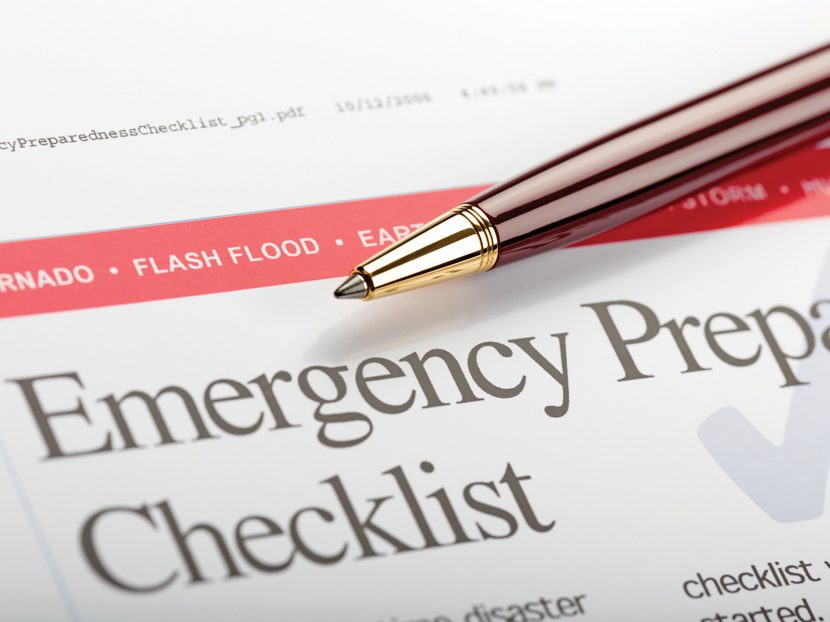Best Practices and Checklists
A branch readiness checklist will ensure that your mission-critical processes are performed the same all the time at each location.

We’ve all heard the old saying, “Be it ever so humble, there is no place like home.” A recent visit to a wholesaler’s store reminded us that it is possible for a location to look a little too humble. So this month, we want to encourage readers to step back and take a “customer-eyes” look at their customer-facing facilities and customer friendliness.
For years, we have recommended that wholesalers maintain a branch readiness checklist. To our knowledge, all mission-critical processes that must be precisely and reliably repeated are reduced to some sort of checklist. Every space mission, all commercial aircraft operations, nuclear power plant operations — the list is endless. The point is, if you have a human process that you must execute flawlessly time and time again, you need a checklist.
Most wholesalers give lip service to the concept of high-quality, efficient, high customer service operations. If you look at the procedures in support of this concept, most wholesalers are sadly lacking. Even large national wholesalers “trust” that their branch managers and branch team members will somehow translate “high-quality, efficient, high customer service” into the proper actions to be taken on a day-in, day-out basis to produce that result. The odds are astronomically against this happening.
If you look at McDonald’s — with almost 38,000 locations worldwide — the operational consistency it achieves is only possible with comprehensive and rigorous procedures. Of course, our industry is nothing like the fast-food industry. But our industry’s future may have some similarities as we look into our crystal ball at the labor force that will be available to our industry.
Specifically, baby boomers are retiring at an increasing rate. They are only partially replaced, in numbers, by a generation of workers who are much less interested in careers or longevity of their employment. It is unlikely we will be able to continue three- to five-year training processes for new hires. It is doubtful there will be adequate experienced, long-term employees to fill supervisory and management positions.
Large companies are banking on automation to address this crisis. (As an aside, the foundation of any project to automate a particular task is to develop a best practice and then a step-by-step electronic checklist of actions to implement that best practice.) For small- and medium-sized wholesalers, we think the development of operational best practices and human checklists in support of those best practices is critical.
We offer these suggestions to start the thought process within your company.
Emergencies: Safety First
As we watch the news, we see stories about heroes who rose to the occasion when faced with some significant event. For each of these heroes, we would bet there are scores of people who panicked, lost all control of bodily functions and responded in an un-heroic fashion. In many instances, the determining factor was the hero acted reflexively based upon past training.
An emergency checklist should be available at each branch location that covers typical operational situations. To be clear, this is not a reprint of your safety policy or safety rules. These are specific actions to be taken in an emergency.
The checklist must be printed and available at multiple locations within the branch. Having the emergency checklist on a PDF file in the computer system that is on fire does not help. Further, the document should be printed in a large font since most of us do not have the presence of mind to grab our readers when the fire alarm goes off.
In communities with 911 service, it is still critical to remind the team to call 911. When not served by 911, include on your checklist police, fire, ambulance, poison control and other essential services. Additionally, assemble a call list with contact numbers for crucial managers; call them after contacting the primary emergency services.
We think the checklist should include the location of critical shutoff switches and valves, electrical panels, gas valves, fuel shutoff valves, air conditioning and ventilation systems, etc. You cannot assume every employee knows their location.
A periodic review of this checklist with all employees is prudent. Years ago, Rich had the opportunity to visit McDonald’s Hamburger University in a Chicago suburb. He was able to observe a training session where emergency procedures were reviewed. The trainer insisted the participants state the problem out loud, such as “fryer fire,” then yell the expected action, “Hit red extinguisher button.”
Our favorite was, “Someone says ‘give me the money,’” the response is “give him the money.” With years of experience, McDonald’s doesn’t want their teams exercising any judgment regarding whether the individual really has a gun, a knife, a baseball bat or a bag of marshmallows. The immediate and only acceptable response is to give that person the money.
Since human beings seem to naturally respond to such a crisis with either a “fight” or “flee” response, some individuals will typically respond, “Over my dead body” and the robber may accept that suggestion. Only with training can they hope to ingrain the proper corporate response, “Give him the money.”
You cannot assume people will naturally evacuate a building if there is a fire. Make it clear. You cannot assume people will respond appropriately in the event of a flash flood. Make it clear.
Normal Operation
In aviation, the pilot or copilot is expected to inspect the aircraft before each flight. Pilots are trained to use a checklist to inspect critical components and to test their proper operation before taxiing or takeoff.
Some may think this excessive but periodic inspection of trucks and forklifts seems appropriate. A checklist of known warehouse safety issues helps remind and alert every person entering the warehouse to report and address safety issues immediately.
Most wholesalers have a part of their operation that customers visit. Particular attention should be paid to maintaining this part of the operation to create the proper impression. Most managers, Jen and Rich included, walk into their office every day and become anesthetized to the appearance of the building and the impression that it might make to visitors.
The water-damaged ceiling tile with the half-full bucket in the middle of the counter area may be invisible to you and your crew but not to your customers. Less egregious, after the leak is fixed, the ceiling tile is not replaced or painted. Customers understand that roofs leak. They don’t understand when the leak has not been fixed after two or three weeks. They don’t understand when the ceiling tile has not been repaired after six months. It just looks shabby.
The only reliable tool we have found is to prepare a branch inspection checklist that is used by your team on a regular basis to conduct a branch review. Inspection is conducted by an individual who inspects then initials and dates each item on the list, indicating who examined and when. In our experience, we have seen checklists “signed off” using a single vertical line through all items on the page, giving us little confidence that the list was used and, even worse, taken seriously.
Again, based on our experience, we would be tempted to put a note at the top of any checklist indicating that falsification of a checklist could result in disciplinary action or termination. (As always, check with your labor attorney.)
Don’t forget your coffee area and restrooms. Just because a tech had his arm in a sewer pipe 30 minutes ago doesn’t mean he won’t appreciate a clean restroom to wash up in and use. Over the years, we have heard that some contractors see very little difference between one wholesaler’s operation and another’s, so it comes down to amenities and the restroom.
Don’t lose business based on a filthy coffee pot or lavatory. It’s on the checklist. If you’re in the plumbing industry, consider your restrooms an extension of your showroom. Be sure your faucets and fixtures are not in disrepair. Even better, keep them updated to the current styles. (If you are waiting for that pink toilet to come back in style, it may take longer than polished brass.)
Examine the exterior, too. In the course of our day, we drive past a lot of wholesaler locations. Some are nice and tidy. Some look like the exterior view of a junkyard. Most are pretty much invisible. A checklist for your parking lot, signage, yard and building helps to keep your outward appearance up to spec.
As with all the checklists, you have to decide how often you want the inspection conducted, but for most wholesalers, once a year would be a real improvement. Consider whether your external appearance tells your story. A sign that says, “Bob’s Wholesale Plumbing” tells a fraction of the story. People drive past that sign thousands of times and know almost nothing about the company. Tell your story: Who you are. What you do. How long you have been in business. The brands you sell.
Consider hiring a mystery shopper, an independent consultant who pretends to be a customer and provides a detailed report describing one or more visits to a location. One of our consulting clients, who used shoppers regularly, lamented, “I hate using shoppers. I always get valuable information about the operation that I don’t get by personally visiting a location, but I often end up having to fire someone based on how badly they treat customers when the manager is away.”
If you are not comfortable with a shopper, conduct your own visits but always by surprise (consider entering through the warehouse when possible). If you don’t want the truth, tell everybody you are coming. At a minimum, it ensures that the place gets cleaned up, the uniforms get washed and the team takes their monthly shower.
Like it or not, our industry is evolving away from bricks and mortar/counter sales toward online sales and delivery. Neglecting the appearance and operation of branch locations will accelerate that evolution. We believe the majority of customers still want to conduct business as they have for many years. Your challenge is to continue to provide high-quality, efficient, high customer service locations that your customers enjoy visiting.





